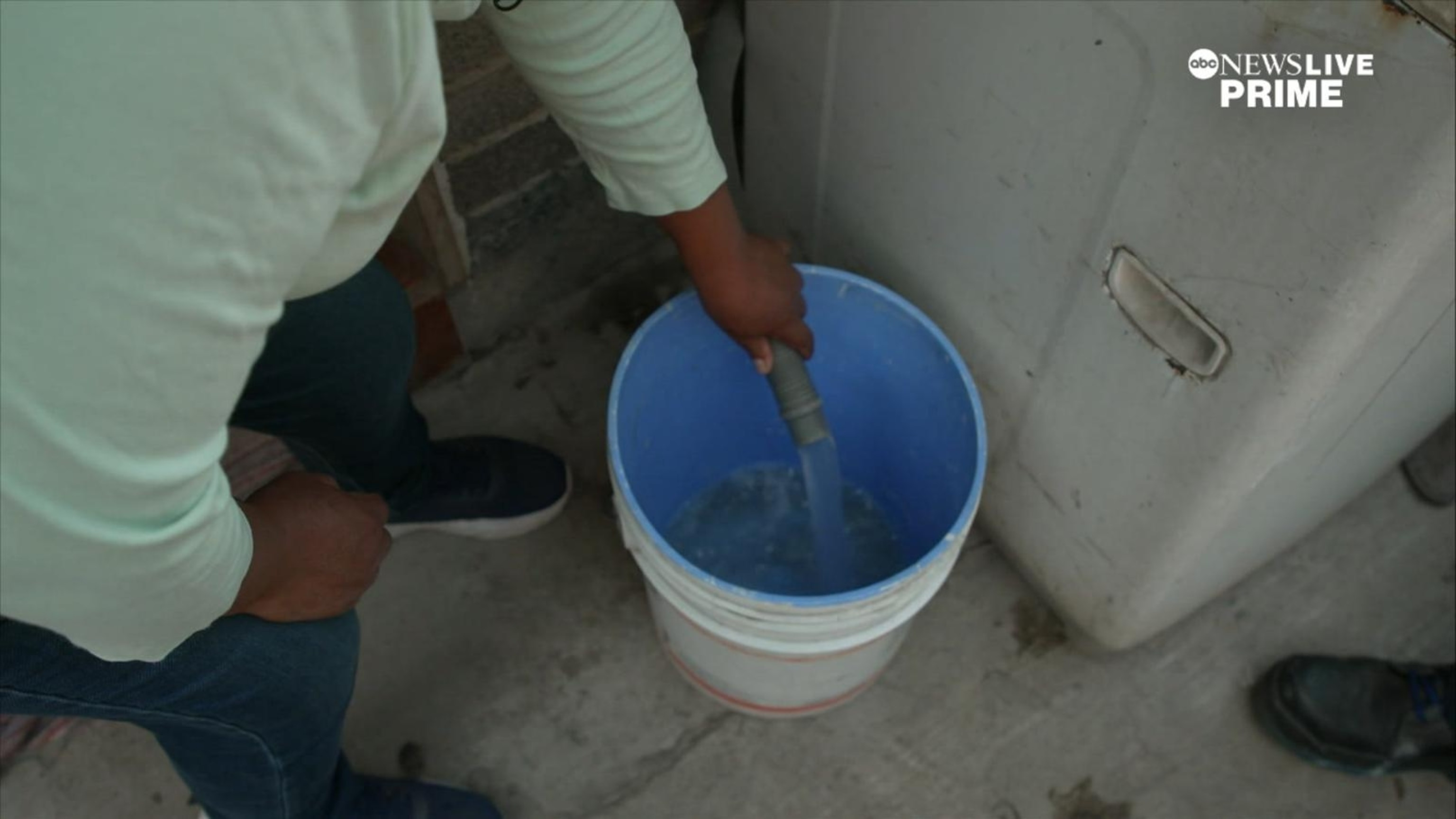Mexico City, a sprawling metropolis and one of the world’s largest urban centers, is grappling with a severe and escalating water crisis. This looming disaster, decades in the making, is driven by a complex interplay of factors, most notably human-induced climate change and unsustainable water management practices. For residents, the reality is stark: dwindling water supplies are forcing them to adopt increasingly drastic measures to secure this essential resource.
The anxiety among Mexico City’s populace regarding the impending water shortages is palpable. In many households across the city, every single drop of water is treated as precious. Running water has become an unreliable luxury for many, and with persistent drought conditions hindering rainfall, communities are increasingly reliant on purchasing water at significant expense, particularly burdening low-income families.
Bernardo Nonato Corona, a resident living in the hills surrounding Mexico City, shared his distressing reality with ABC News, stating that he now allocates a staggering 25% of his already stretched earnings to secure water for his household. His situation is not unique; millions across Mexico City’s vast urban landscape echo this struggle daily, highlighting the widespread impact of the water crisis.
 A resident in Mexico City carefully manages their water supply, highlighting the daily struggle with water shortages.
A resident in Mexico City carefully manages their water supply, highlighting the daily struggle with water shortages.
“Water is absolutely indispensable; it’s used for everything,” Corona explained, emphasizing the multifaceted necessity of water in daily life. “For drinking, for maintaining the house, for personal hygiene, and even for tending to plants. With the lack of rain, you’re forced to water them, further depleting your precious supply.”
Dwindling Rainfall and Depleted Aquifers Fuel the Crisis
Over recent months and potentially years, Mexico City’s watershed has experienced a significant and concerning decline in rainfall. The consequences of this prolonged drought are becoming increasingly apparent, prompting widespread concern and open questions about the city’s immediate water security. For the first time, many residents are publicly questioning whether Mexico City is on the brink of a full-blown water shortage.
A substantial portion of Mexico City’s water supply, estimated between 60% and 70%, originates from underground aquifers – geological formations composed of rock and sediment that naturally store groundwater. However, a recent study has revealed an alarming trend: approximately 5 million Olympic-sized swimming pools worth of groundwater have been extracted annually over the past decade. This unsustainable rate of extraction is rapidly depleting these vital reserves.
Compounding the issue, the city’s ability to replenish its water sources is severely hampered. Mexico City increasingly relies on rainfall to fill crucial reservoirs and recharge groundwater levels. However, the ongoing historic drought, exacerbated by the intensifying effects of human-caused climate change, means that a reliable and prolonged rainy season can no longer be taken for granted, as experts have cautioned to ABC News.
Infrastructure Failures and Lack of Investment Worsen Scarcity
Enrique Lomnitz, the founder of Isla Urbana, an organization dedicated to addressing Mexico’s water challenges, returned to Mexico City after his studies in the United States with a clear mission: to help his home country navigate its escalating water crisis. His organization is actively working to mitigate the risk of Mexico City completely running out of water.
“The reservoirs are essentially empty,” Lomnitz stated, highlighting the critical state of the city’s surface water reserves. “That represents 30 to 40% of the city’s water supply that we are no longer receiving, or are only getting a mere trickle compared to the stream we once relied upon. Consequently, we are not adequately replenishing our aquifers. Instead, we are pumping out an enormous and unsustainable quantity of water from the ground to meet the needs of 22 million people. This over-extraction is at the heart of the problem.”
Decades of insufficient investment in Mexico City’s aging water infrastructure have further exacerbated the crisis. A staggering 40% of all water pumped through the city’s distribution network is lost due to extensive leaks in the antiquated pipes. This means a significant volume of treated water simply seeps back into the ground before reaching its intended destination. Furthermore, during periods of rainfall, the city is forced to pump out billions of gallons of water to prevent flooding – water that could, in theory, be treated and recycled to augment dwindling supplies.
Despite repeated requests from ABC News, representatives from Mexico City’s water system administration have not provided any comments regarding the ongoing crisis or the measures being taken to address it.
Political Perspectives and Future Uncertainties
On the political front, Mexico’s president-elect, Claudia Sheinbaum, who previously served as mayor of Mexico City, addressed the water crisis during a public event in May 2024. She stated, “No scientist, because there is still no science that can do that, could predict this circumstance,” seemingly downplaying the role of long-term planning and scientific forecasting in anticipating the current water shortages.
However, this statement contradicts the consensus among scientists who assert that droughts are indeed foreseeable and that proactive planning and preventative measures are crucial. While acknowledging the severity of the situation, Sheinbaum also added, “We already know where the water is going to come from, how to invest; it is going to be the great investment that we are going to make in the metropolitan area of the Valley of Mexico,” suggesting future investment in water infrastructure.
ABC News reached out to Sheinbaum’s campaign team to request further details regarding these planned investments and strategies, but they did not respond to the request for comment, leaving the specifics of the proposed solutions unclear.
Facing an Existential Crisis with Resilience and Adaptation
As climate change continues to intensify, bringing more extreme heat waves and prolonged droughts, the future water security of Mexico City hangs in the balance. For residents like Bernardo Nonato Corona and millions of others, everything is at stake.
“We are not considering the future for our children,” Corona lamented, expressing deep concern about the long-term implications of the water crisis. “If things continue as they are, water will become even more expensive, and water shortages will become even more severe. If we don’t find a solution to this water issue, I don’t know what will become of our children and grandchildren.”
To navigate this critical juncture and ensure a sustainable future, Mexico City must prioritize more efficient and sustainable water management practices to better prepare for inevitable future droughts. Addressing the historic drought, exacerbated by climate change, record-breaking heat, and failing infrastructure, is paramount to improving Mexico City’s overall water usage and securing its long-term water supply.
Despite the daunting challenges, Enrique Lomnitz maintains a degree of optimism, stating, “I think it’s an existential crisis for the city, but I also believe that people are incredibly adaptive. I think people are very resilient, and Mexico City is resilient. Mexico City has endured a great deal throughout its history. It’s not over yet.”
